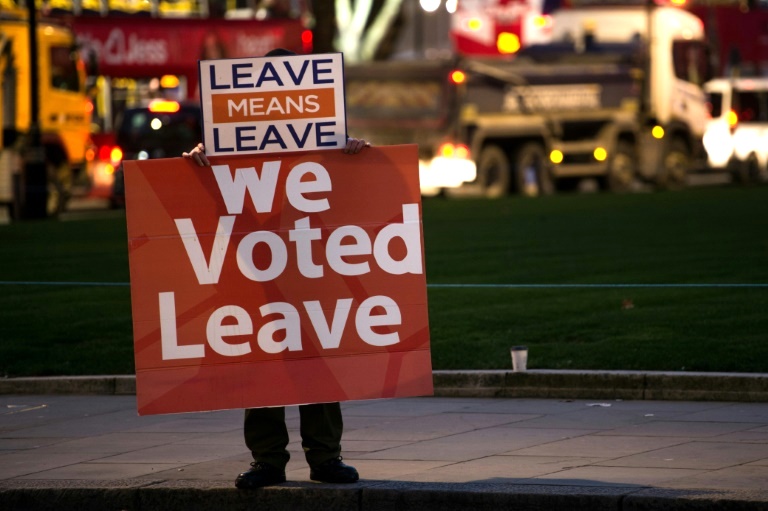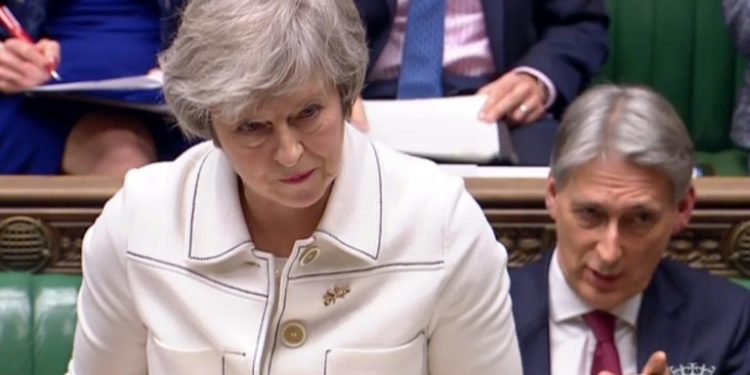The British parliament holds a historic vote Tuesday on the Brexit deal agreed with the EU and all sides are bracing for turmoil when the text is almost certainly rejected.
With just over two months to go until the scheduled Brexit date of March 29, a bitterly divided Britain is in limbo and the world is on tenterhooks about what will happen next.
Few expect the deal to pass, but the scale of Prime Minister Theresa May’s defeat could determine whether she tries again, loses office, delays Brexit — or if Britain even leaves the EU at all.
MPs from all parties oppose the agreement, for different reasons, but on the eve of the vote May urged them to look again.
“No, it is not perfect. And yes, it is a compromise,” she said.
“But when the history books are written, people will look at the decision of this house… and ask: did we deliver on the country’s vote to leave the European Union?
“Or did we let the British people down?”
Nothing has changed
The deal was agreed with the EU November after 18 months of talks described as Britain’s toughest since World War II.
But hardline Brexit supporters fear it keeps Britain too closely tied to the EU and represents a “betrayal”, while pro-Europeans argue it leaves the country half-in, half-out.

Rather than heal the divisions exposed by the 2016 Brexit referendum, it has reignited them, with pro-European MPs facing death threats and harassment outside parliament.
Brexit supporters around the country have voiced growing frustration with what they see as parliamentary blockage of their democratic vote, while europhiles see hope in the increased talk of a second referendum to end the impasse.
May postponed a House of Commons vote on the deal in December, facing certain defeat, and has since offered MPs clarifications she hopes will convince them.
Criticism is focused on an arrangement to keep open the border with Ireland by aligning Britain with some EU trade rules, if and until London and Brussels sign a new economic partnership.
May has offered parliament greater oversight of this so-called backstop, and at her request, EU leaders have also given written assurances that the arrangement would not become permanent.
A handful of Conservative MPs have changed their minds to back the deal, but a junior minister resigned on Monday so he could vote against it — and the core of May’s critics say she has not done enough.
“Nothing has fundamentally changed,” said Nigel Dodds of the Democratic Unionist Party (DUP), the Northern Irish party on whom May relies for her Commons majority.
Opposition Labour leader Jeremy Corbyn said May had “completely and utterly failed” to ease MPs’ concerns and said if she loses the vote on Tuesday night, she must call an election.
His party has also threatened a confidence vote in her government.
Risk of no deal
Voting begins at 7:00 pm (1900 GMT), with MPs likely to decide on a number of amendments first, which could seek to change or kill the Brexit deal.
In the event of a defeat, the government must set out what happens next by Monday at the latest.

Speculation is growing on both sides of the Channel that May could ask to delay Brexit, but she said Monday: “I don’t believe that the date of March 29 should be delayed.”
The withdrawal agreement includes plans for a post-Brexit transition period to provide continuity until a new relationship is drawn up, in return for continued budget contributions from London.
Without it, and if there is no delay, Britain will sever 46 years of ties with its nearest neighbours this spring with no new arrangements to ease the blow.
MPs fearful of a “no deal” scenario have vowed to use parliamentary procedures to force the government to seek an alternative plan that the Commons can support.
Some commentators suggest May could return to Brussels, seeking further assurances on the deal and the future EU-UK relationship and ask parliament to vote again.
“At the second time of asking, MPs might just vote for her deal over the catastrophe that would be no deal,” said John Springford, deputy director of the Centre for European Reform.
AFP
Also Read:






































